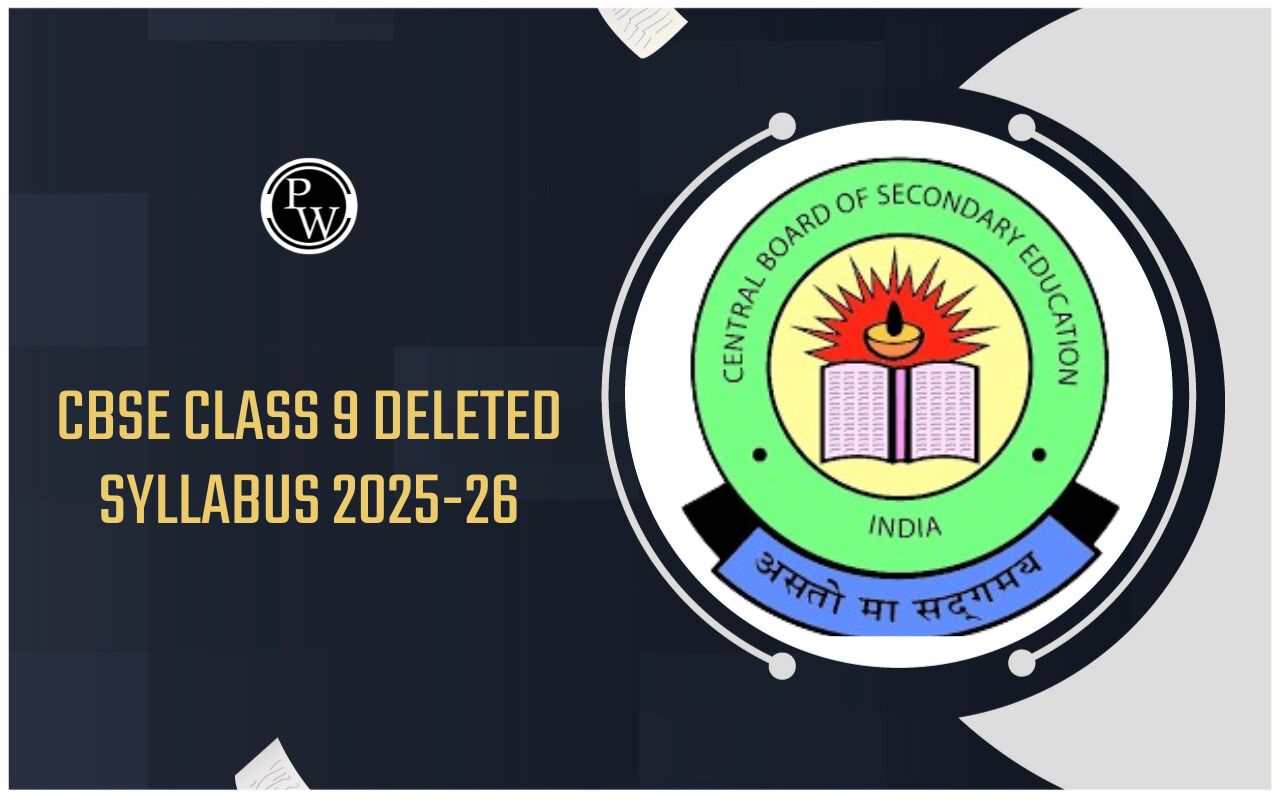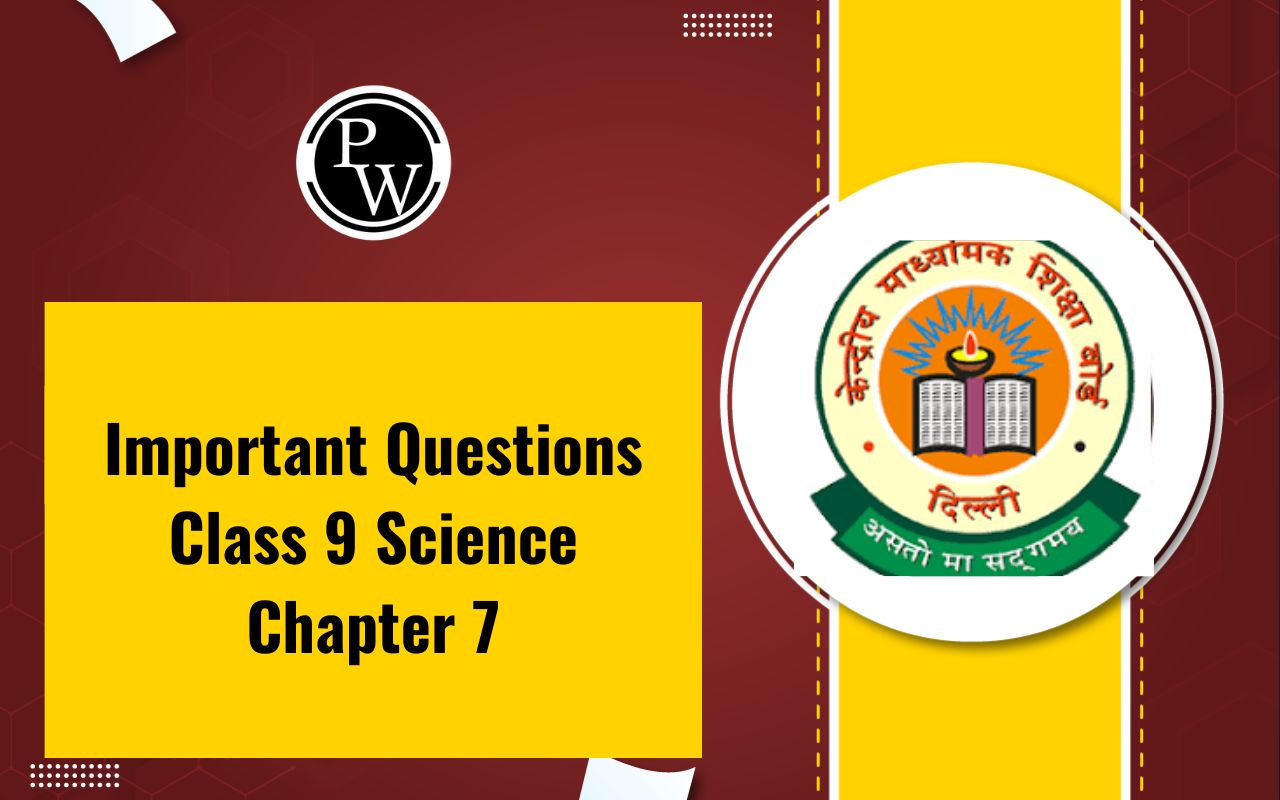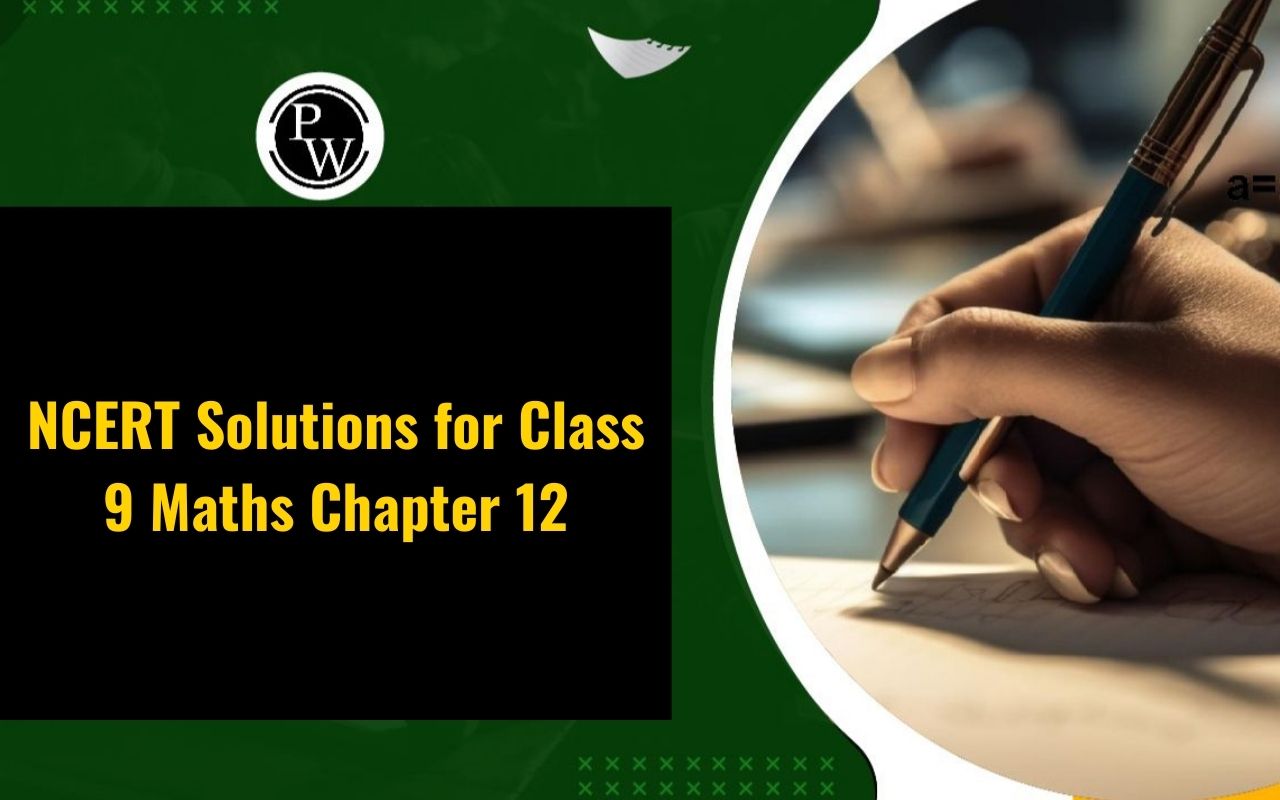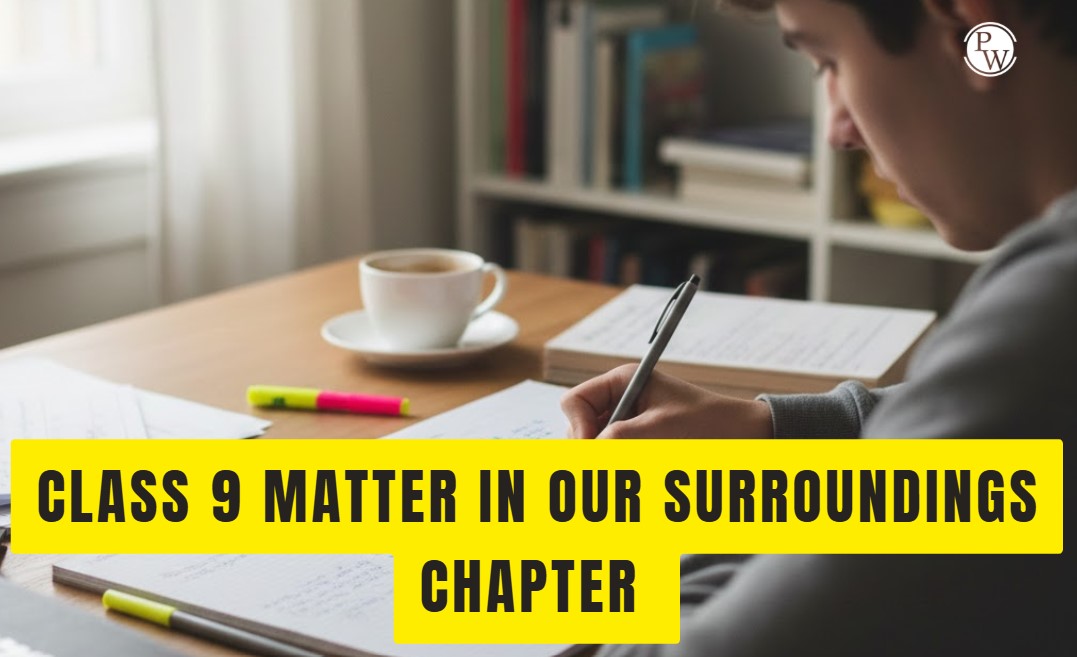
RS Aggarwal Solutions Class 9 Maths Chapter 7: RS Aggarwal Solutions Class 9 Maths Chapter 7 - Lines and Angles is a helpful guide for students learning about lines and angles. In this chapter, you'll learn about different types of angles and properties of lines.
The solutions provided in this guide are easy to follow, with clear explanations for each problem. By practicing with these solutions, you can improve your understanding of geometry and become more confident in solving related problems.RS Aggarwal Solutions Class 9 Maths Chapter 7 - Lines and Angles PDF
You can access the RS Aggarwal Solutions for Class 9 Maths Chapter 7 - Lines and Angles PDF through the provided link. These solutions provide detailed explanations and step-by-step guidance to help you understand and solve the exercises in your textbook. By using these solutions, you can enhance your understanding of lines and angles, sharpen your problem-solving skills, and prepare effectively for exams.RS Aggarwal Solutions Class 9 Maths Chapter 7 - Lines and Angles PDF
RS Aggarwal Solutions Class 9 Maths Chapter 7 - Lines and Angles
Below, you'll find detailed solutions for RS Aggarwal Class 9 Maths Chapter 7 - Lines and Angles. These solutions are designed to help you understand the concepts better and solve problems step by step. They'll assist you in improving your problem-solving skills and preparing for exams effectively. Whether you're revising concepts or practicing exercises, these solutions will be a useful resource to support your learning in mathematics.RS Aggarwal Solutions Class 9 Chapter 7 Lines and Angles Exercise- 4.1
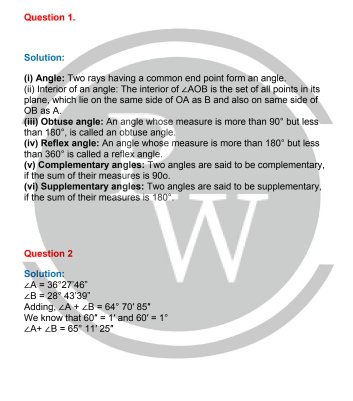
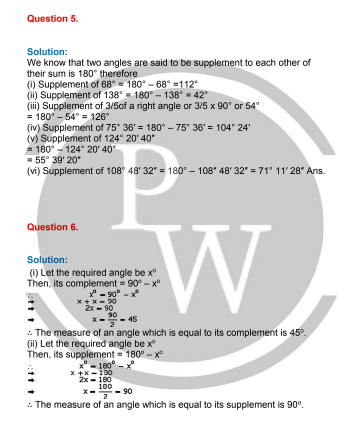
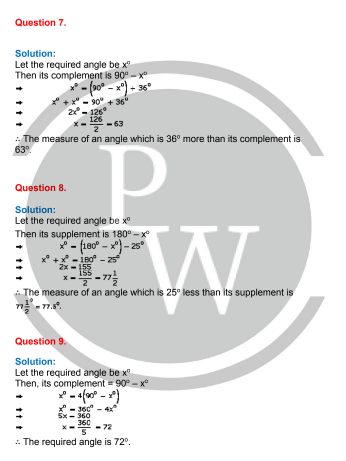
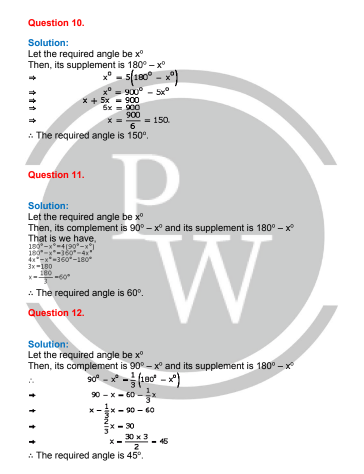
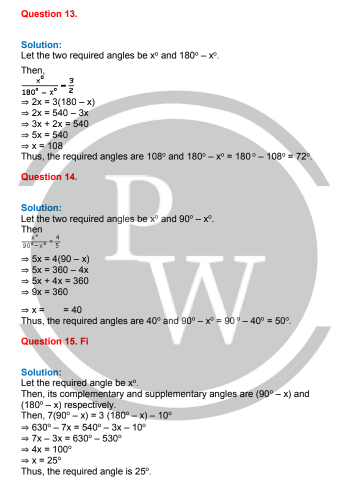
RS Aggarwal Solutions Class 9 Chapter 7 Lines and Angles Exercise- 4.2
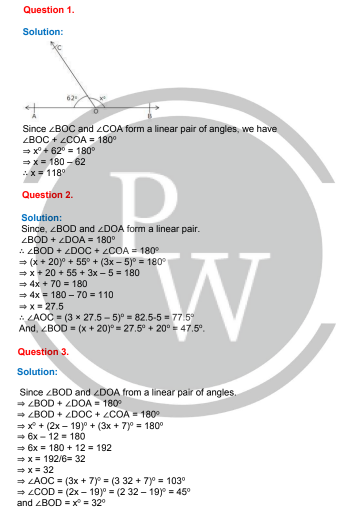

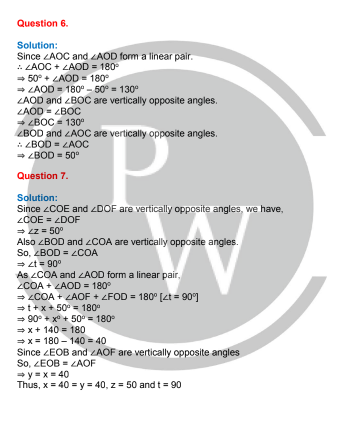
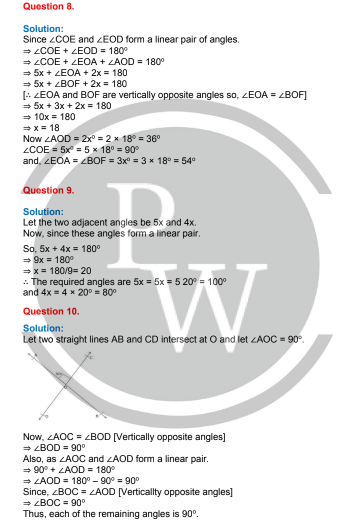
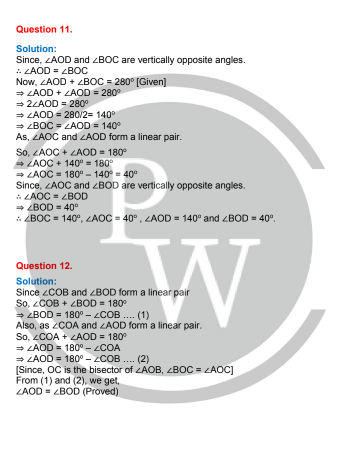
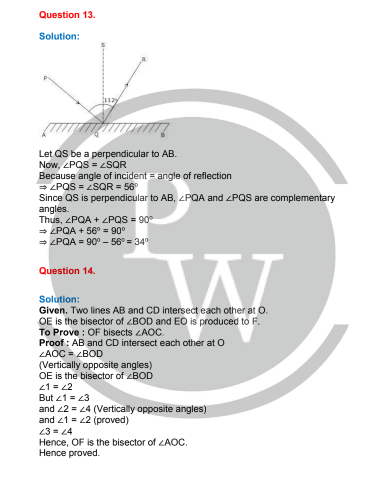
Question 15.
Solution:
Given ∠AOC and ∠BOC are supplementary angles OE is the bisector of ∠BOC and OF is the bisector of ∠AOC To Prove : ∠EOF = 90° Proof : ∠1 = ∠2 ∠3 = ∠4 {OE and OF are the bisectors of ∠BOC and ∠AOC respectively} But ∠AOC + ∠BOC = 180° (Linear pair) => ∠1 + ∠2 + ∠3 + ∠4 = 180° => ∠1 + ∠1 + ∠3 + ∠3 = 180° => 2∠1 + 2∠3 = 180° => 2(∠1 + ∠3) = 180° => ∠1 + ∠3 = 180°/2 = 90° => ∠EOF = 90° Hence proved. RS Aggarwal Solutions Class 9 Chapter 7 Lines and Angles Exercise- 4.3Question 1.
Solution:
Since AB and CD are given to be parallel lines and t is a transversal. So, ∠5 = ∠1 = 70o [Corresponding angles are equal] ∠3 = ∠1 = 70o [Vertically opp. Angles] ∠3 + ∠6 = 180o [Co-interior angles on same side] ∴ ∠6 = 180o – ∠3 = 180o – 70o = 110o ∠6 = ∠8 [Vertically opp. Angles] ⇒ ∠8 = 110o ⇒ ∠4 + ∠5 = 180o [Co-interior angles on same side] ∠4 = 180o – 70o = 110o ∠2 = ∠4 = 110o [ Vertically opposite angles] ∠5 = ∠7 [Vertically opposite angles] So, ∠7 = 70o ∴ ∠2 = 110o, ∠3 = 70o, ∠4 = 110o, ∠5 = 70o, ∠6 = 110o , ∠7 = 70o and ∠8 = 110oQuestion 2.
Solution:
Since ∠2 : ∠1 = 5 : 4. Let ∠2 and ∠1 be 5x and 4x respectively. Now, ∠2 + ∠1 = 180, because ∠2 and ∠1 form a linear pair. So, 5x + 4x = 180o ⇒ 9x = 180o ⇒ x = 20o ∴ ∠1 = 4x = 4 × 20o = 80o And ∠2 = 5x = 5 × 20o = 100o ∠3 = ∠1 = 80o [Vertically opposite angles] And ∠4 = ∠2 = 100o [Vertically opposite angles] ∠1 = ∠5 and ∠2 = ∠6 [Corresponding angles] So, ∠5 = 80o and ∠6 = 100o ∠8 = ∠6 = 100o [Vertically opposite angles] And ∠7 = ∠5 = 80o [Vertically opposite angles] Thus, ∠1 = 80o, ∠2 = 100o, ∠3 = ∠80o, ∠4 = 100o, ∠5 = 80o, ∠6 = 100o ∠7 = 80o and ∠8 = 100oQuestion 3.
Solution:
Given: AB || CD and AD || BC To Prove: ∠ADC = ∠ABC Proof: Since AB || CD and AD is a transversal. So sum of consecutive interior angles is 180o . ⇒ ∠BAD + ∠ADC = 180o ....(i) Also, AD || BC and AB is transversal. So, ∠BAD + ∠ABC = 180o ....(ii) From (i) and (ii) we get: ∠BAD + ∠ADC = ∠BAD + ∠ABC ⇒ ∠ADC = ∠ABC (Proved)Question 4.
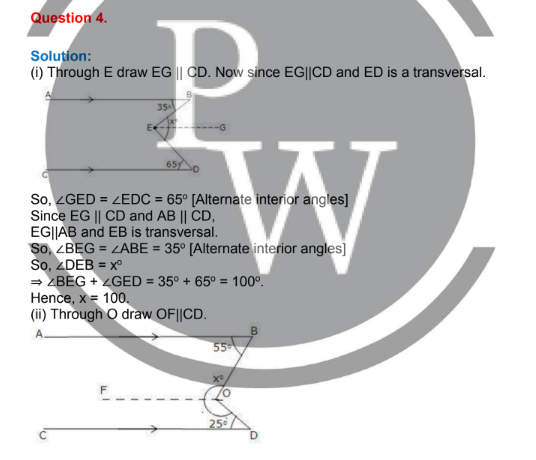
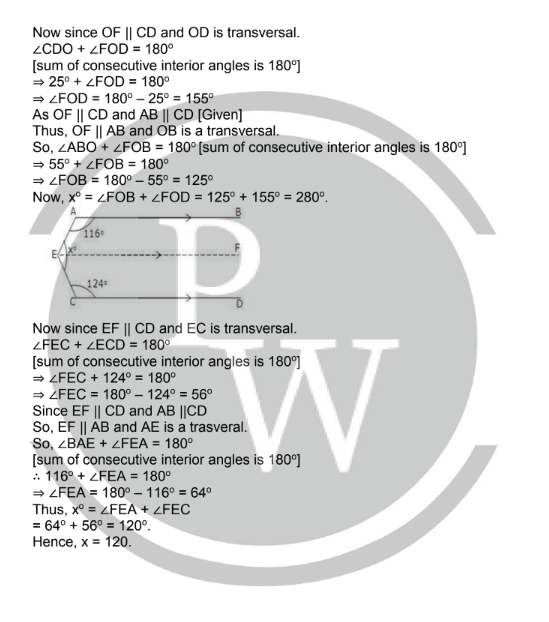
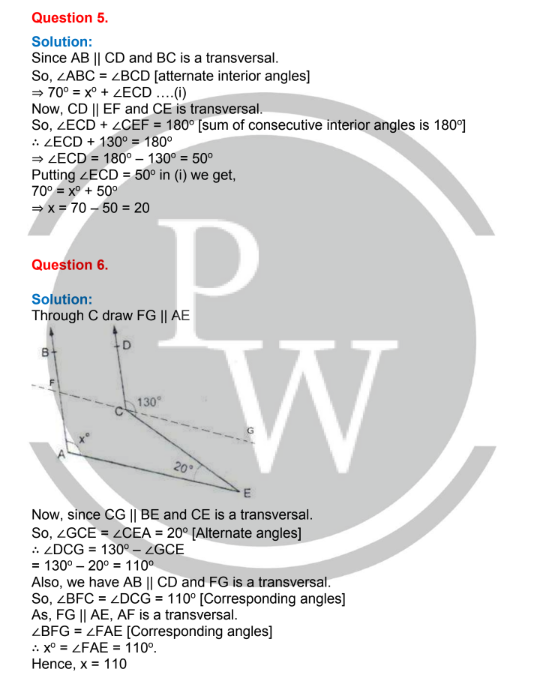
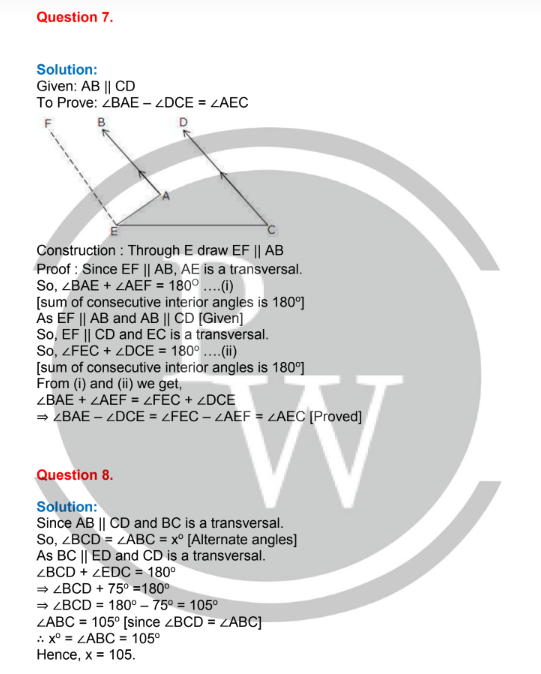
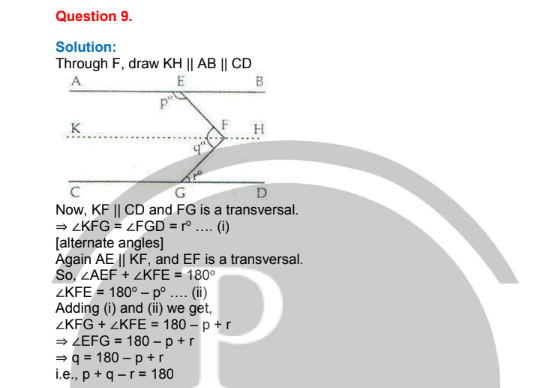
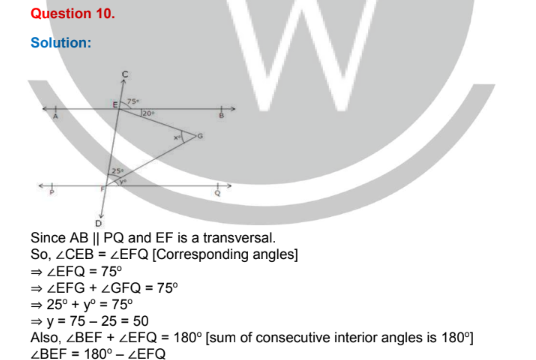
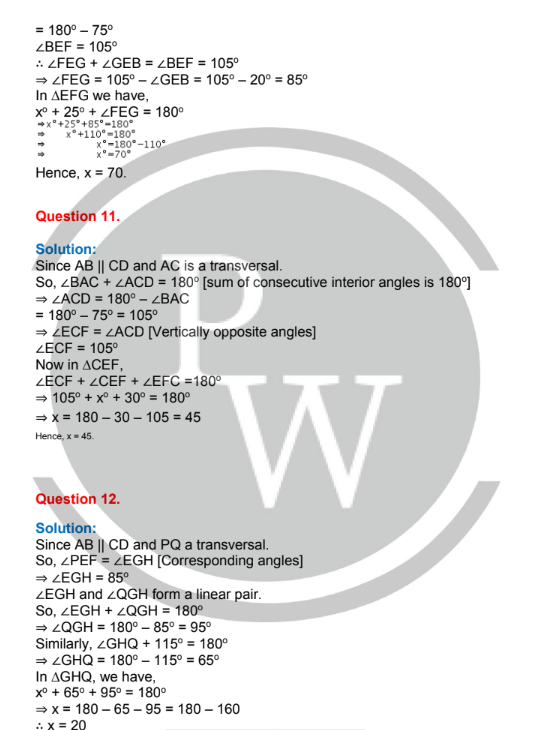
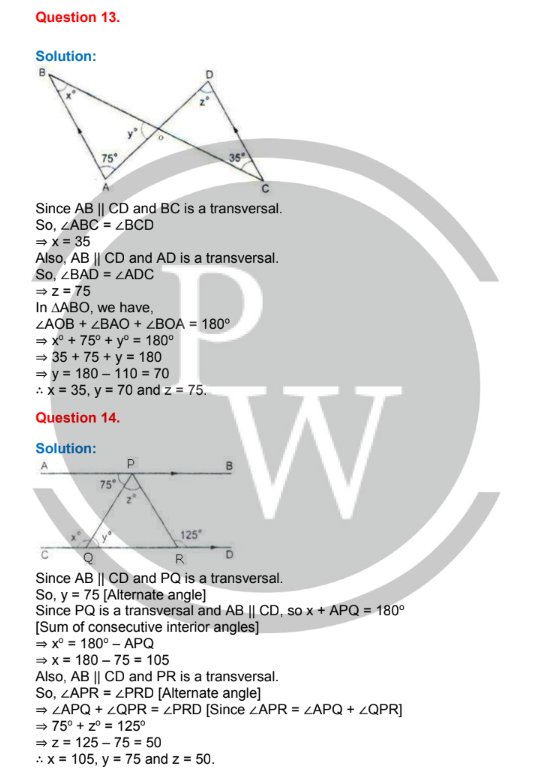
Question 15.
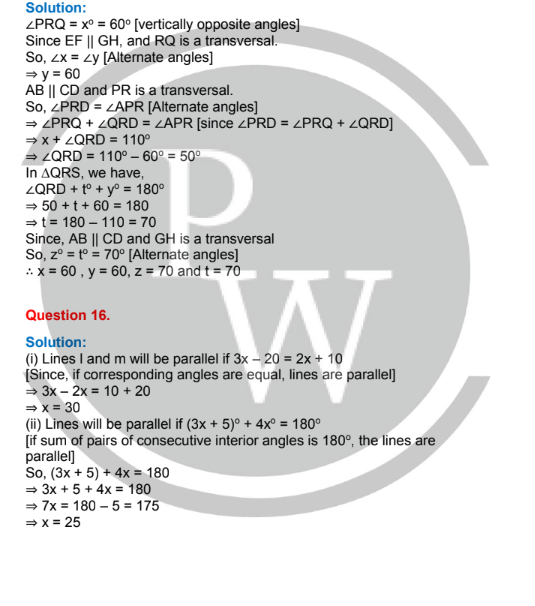
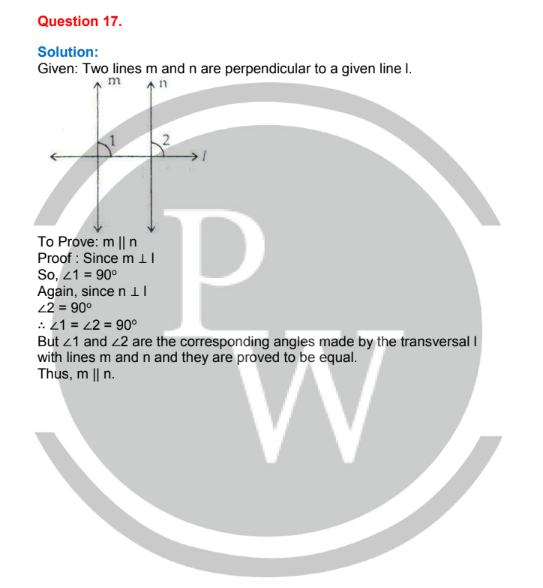
RS Aggarwal Solutions Class 9 Chapter 7 Lines and Angles Exercise- 4.3
Question 1.
Solution:
Since AB and CD are given to be parallel lines and t is a transversal. So, ∠5 = ∠1 = 70o [Corresponding angles are equal] ∠3 = ∠1 = 70o [Vertically opp. Angles] ∠3 + ∠6 = 180o [Co-interior angles on same side] ∴ ∠6 = 180o – ∠3 = 180o – 70o = 110o ∠6 = ∠8 [Vertically opp. Angles] ⇒ ∠8 = 110o ⇒ ∠4 + ∠5 = 180o [Co-interior angles on same side] ∠4 = 180o – 70o = 110o ∠2 = ∠4 = 110o [ Vertically opposite angles] ∠5 = ∠7 [Vertically opposite angles] So, ∠7 = 70o ∴ ∠2 = 110o , ∠3 = 70o , ∠4 = 110o , ∠5 = 70o, ∠6 = 110o , ∠7 = 70o and ∠8 = 110oQuestion 2.
Solution:
Since ∠2 : ∠1 = 5 : 4. Let ∠2 and ∠1 be 5x and 4x respectively. Now, ∠2 + ∠1 = 180 because ∠2 and ∠1 form a linear pair. So, 5x + 4x = 180o ⇒ 9x = 180o ⇒ x = 20o ∴ ∠1 = 4x = 4 × 20o = 80o And ∠2 = 5x = 5 × 20o = 100o ∠3 = ∠1 = 80o [Vertically opposite angles] And ∠4 = ∠2 = 100o [Vertically opposite angles] ∠1 = ∠5 and ∠2 = ∠6 [Corresponding angles] So, ∠5 = 80o and ∠6 = 100o ∠8 = ∠6 = 100o [Vertically opposite angles] And ∠7 = ∠5 = 80o [Vertically opposite angles] Thus, ∠1 = 80o , ∠2 = 100o, ∠3 = ∠80o, ∠4 = 100o, ∠5 = 80o, ∠6 = 100o,∠7 = 80o and ∠8 = 100o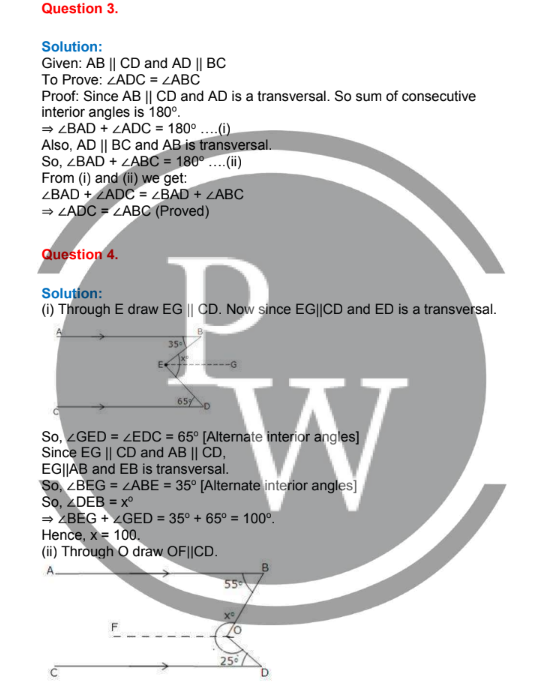
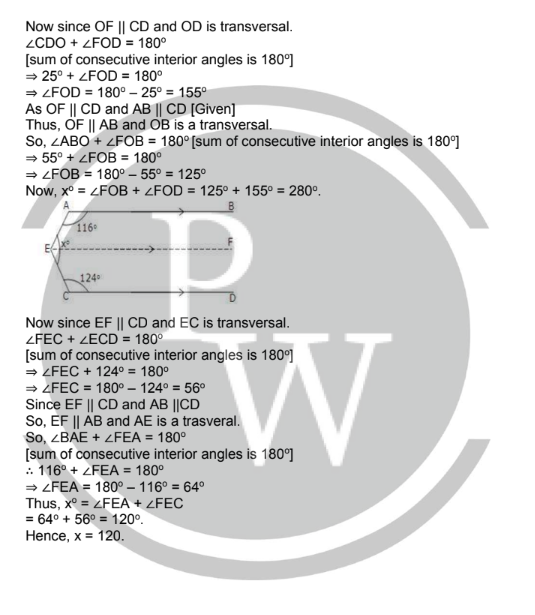
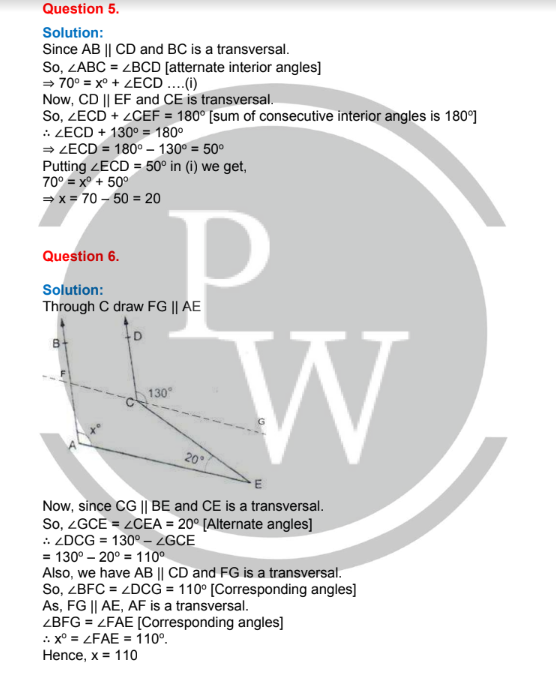
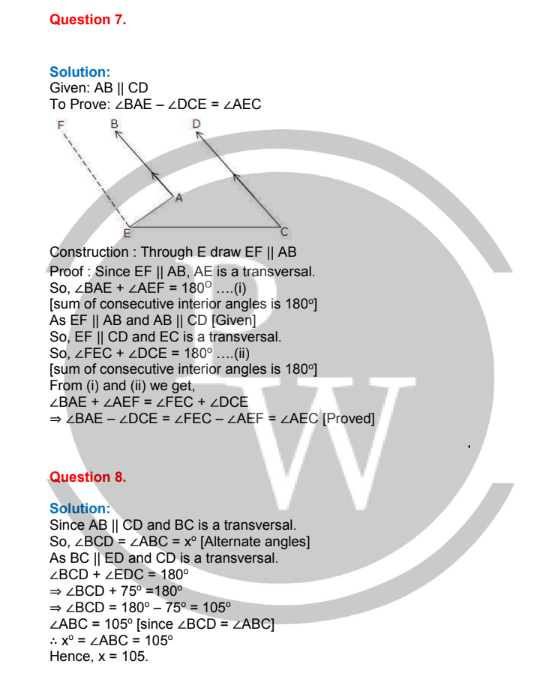
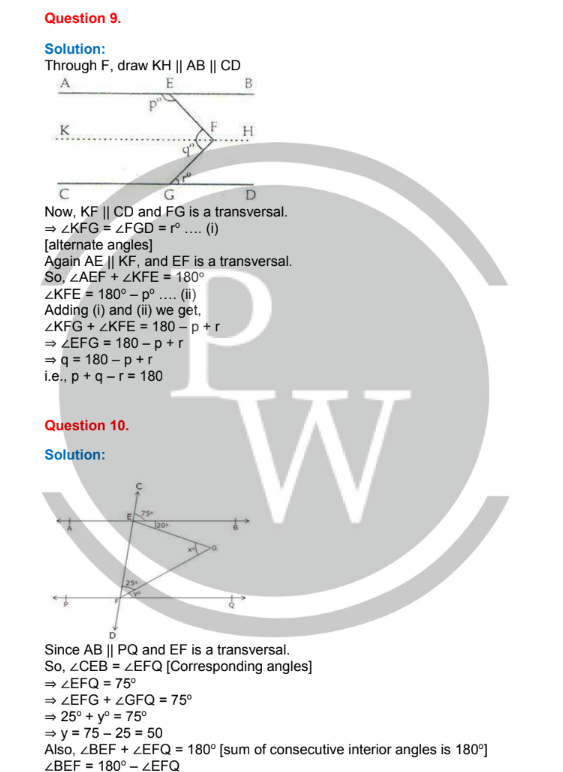
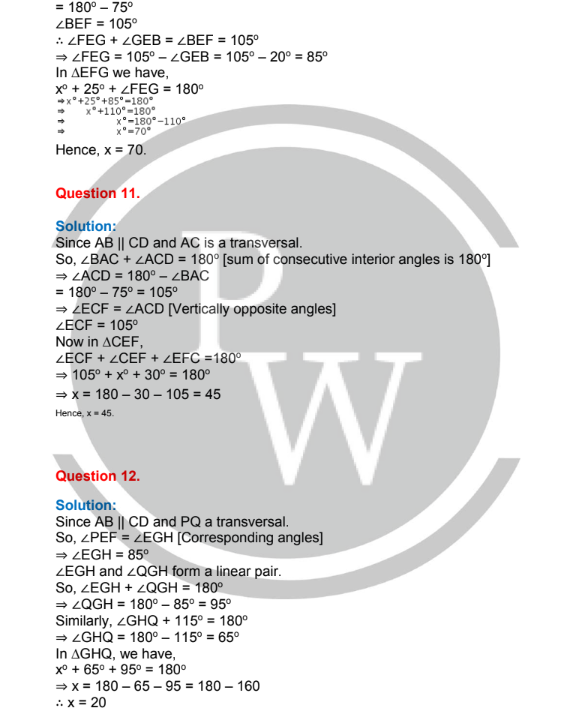
Question 13.
Solution:
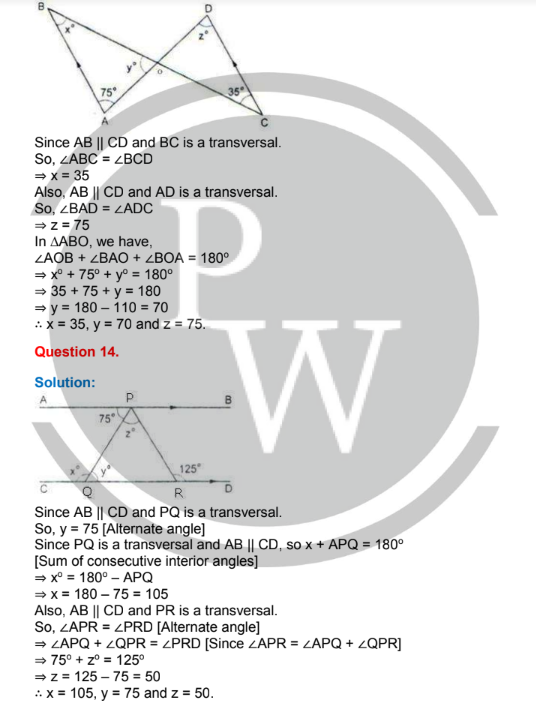
Question 15.
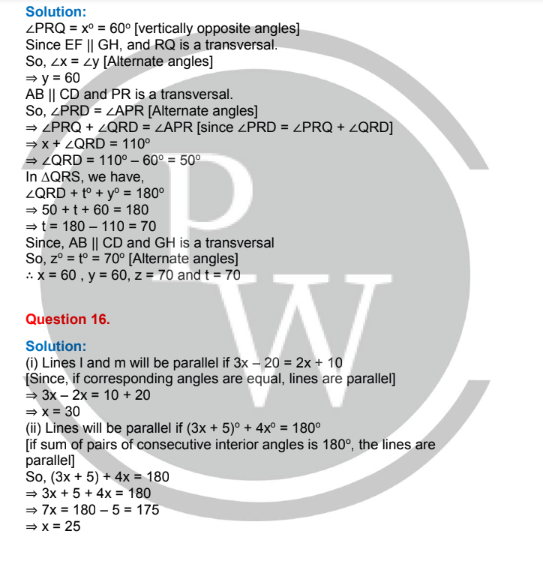
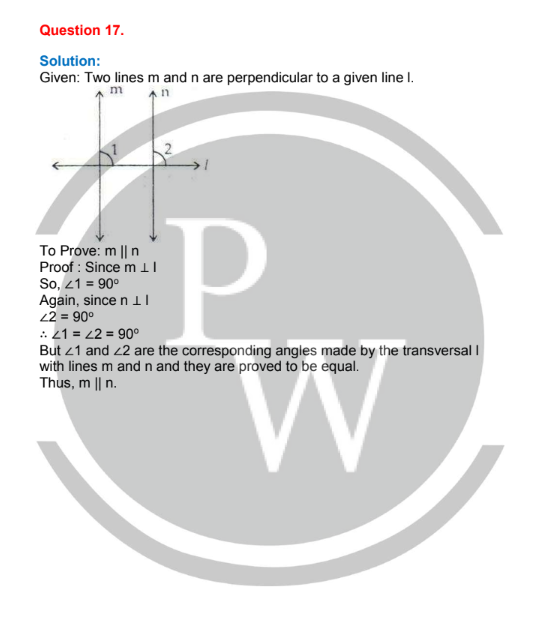
Benefits of RS Aggarwal Solutions Class 9 Maths Chapter 7 - Lines and Angles
RS Aggarwal Solutions for Class 9 Maths Chapter 7 - Lines and Angles provide several benefits to students:Detailed Coverage: The solutions cover all the topics and concepts included in the chapter, ensuring a thorough understanding of the subject matter.
Step-by-Step Approach: Each solution is presented in a step-by-step manner, making it easier for students to follow and learn.
Clarity of Concepts: The solutions provide clear explanations and reasoning behind each step, helping students grasp the underlying concepts more effectively.
Practice Material: The solutions include ample practice questions and examples to help students reinforce their learning and improve their problem-solving skills.
Preparation for Exams: By practicing with RS Aggarwal Solutions, students can better prepare for their exams and gain confidence in tackling questions related to lines and angles.
| CBSE Class 9 Maths Syllabus | CBSE Class 9 Science Syllabus |
| CBSE Class 9 Computer Application Syllabus | CBSE Class 9 Social Science Syllabus |
RS Aggarwal Solutions Class 9 Maths Chapter 7 FAQs
How can RS Aggarwal Solutions for Class 9 Maths Chapter 7 help in exam preparation?
Are the solutions provided in RS Aggarwal Solutions easy to understand?
Can RS Aggarwal Solutions for Class 9 Maths Chapter 7 be used for self-study?


